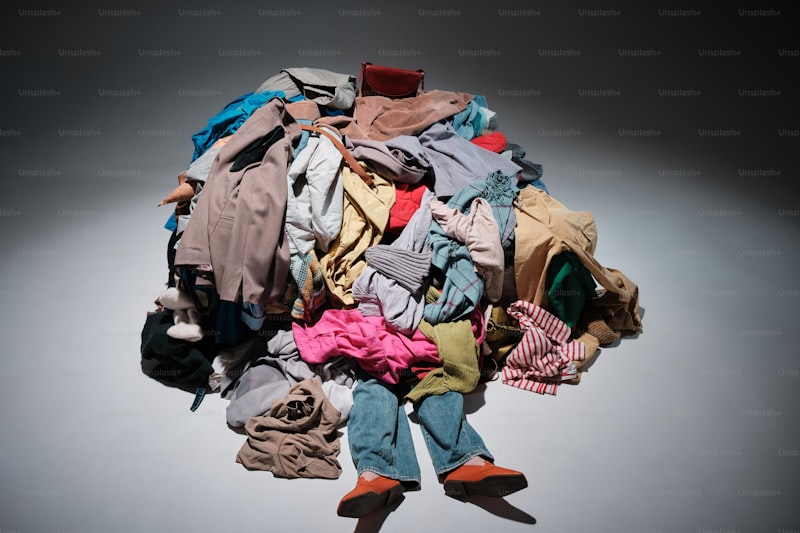Sustainable Fashion: Renting vs. Buying - Making the Right Choice
Understanding Sustainable Fashion Choices
Sustainable fashion has become a hot topic in recent years as consumers grow more conscious of their environmental footprint. Among the many choices available to eco-conscious shoppers, two options stand out: renting and buying clothing. But what does it mean to choose sustainable fashion, and how do renting and buying compare? In this article, we will explore the benefits and drawbacks of each option while providing insights to help you make informed decisions.
The Rise of Sustainable Fashion
Before diving into the specifics of renting versus buying, let’s take a closer look at the rise of sustainable fashion. With fast fashion dominating the market in the past few decades, the negative impacts on the environment, societal implications, and labor conditions have come to light. This shift has led to a demand for more sustainable practices within the fashion industry.
What is Sustainable Fashion?
Sustainable fashion refers to clothing that is designed, created, and consumed in a way that is both environmentally friendly and socially responsible. It emphasizes the use of eco-friendly materials, ethical labor practices, and reduced waste. As consumers, the choices we make regarding our clothing can significantly influence the industry. This leads us to consider how renting and buying fit into this eco-conscious framework.
Renting Clothing: Advantages and Disadvantages
| Advantages of Renting Fashion | Disadvantages of Renting Fashion |
| 1. Access to High-Quality Brands: Renting allows you to wear high-end designer clothing without the hefty price tag. This is especially beneficial for special occasions. | 1. Feeling of Ownership: Renting means you do not own the clothes, which can detract from the personal connection many feel with their wardrobe. |
| 2. Reducing Textile Waste: By renting, you contribute to a decrease in the demand for new clothing production and the associated resource consumption. | 2. Frequent Changes: Rental companies often require garments to be returned after a short period, which can be inconvenient for those who prefer to keep their wardrobe stable. |
| 3. Sustainability: Renting extends the lifecycle of clothing, promoting sustainable behavior among consumers. | 3. Cleaning Fees: Some rental services may charge fees for cleaning or maintaining garments, which can diminish the cost-effectiveness. |
Buying Clothing: Is It Still a Sustainable Choice?
While buying may seem less appealing in terms of sustainability, it can still offer benefits if approached thoughtfully. Sustainable buying refers to purchasing from eco-friendly brands, second-hand shops, or investing in timeless pieces that last longer.
Benefits of Buying Sustainable Fashion
- Ownership and Connection: Purchasing clothing allows you to form a personal connection to your wardrobe.
- Long-term Investment: High-quality sustainable pieces often last longer than fast fashion items, providing better value over time.
- Supporting Ethical Brands: By consciously choosing brands committed to sustainability, you help promote responsible practices within the industry.
Challenges of Buying Sustainable Fashion
- Higher Initial Costs: Eco-friendly items often come with a higher price tag, which can be a barrier for some consumers.
- Choice Overload: The vast number of sustainable brands and options can make it difficult to know where to start.
- Resource Intensity: Despite purchasing sustainably, the act of buying new clothing still demands resources and contributes to waste.
Renting vs. Buying: Which Is Better for You?
When deliberating between renting and buying, it’s essential to assess your lifestyle and personal values. Here are some questions to consider:
- How often do you wear new clothes? If you attend multiple events requiring different outfits, renting might be more practical.
- Are you looking to build a long-lasting wardrobe? If so, investing in high-quality pieces may be beneficial.
- What is your budget? Renting can be cost-effective for special occasions, while investing in a timeless piece can save money over time.
- Are you more concerned about immediate impact or long-term sustainability? Both approaches contribute positively; the choice is about how you see yourself in the fashion landscape.
Making Sustainable Fashion Choices
Whether you opt for renting or buying, there are several steps you can take to ensure your fashion choices are as sustainable as possible:
- Research Brands: Be informed about the brands you support. Look for certifications that indicate sustainable practices.
- Consider Second-hand Options: Thrift shopping or buying second-hand clothing is an excellent alternative that reduces demand for new production.
- Invest in Quality: When buying, choose higher-quality, versatile pieces that you know you’ll wear multiple times.
- Limit Impulse Purchases: Focus on what you truly need versus what you want in the moment.
- Care for Your Clothes: Proper maintenance can extend the life of your garments significantly, reducing the need for replacements.
Conclusion
Both renting and buying can be part of a sustainable fashion journey. By understanding the advantages and disadvantages of each option, you can make informed decisions that align with your values and lifestyle. Remember that every change, no matter how small, contributes to a larger impact. Embrace sustainable fashion by exploring what works best for you, whether that's the flexibility and variety of renting or the ownership and emotional connection of buying.
In conclusion, sustainable fashion is not merely about choosing one over the other; it’s about being mindful of your choices and embracing a lifestyle that promotes responsibility towards our planet. The key lies in informed decisions, thorough research, and a commitment to conscious consumption.
